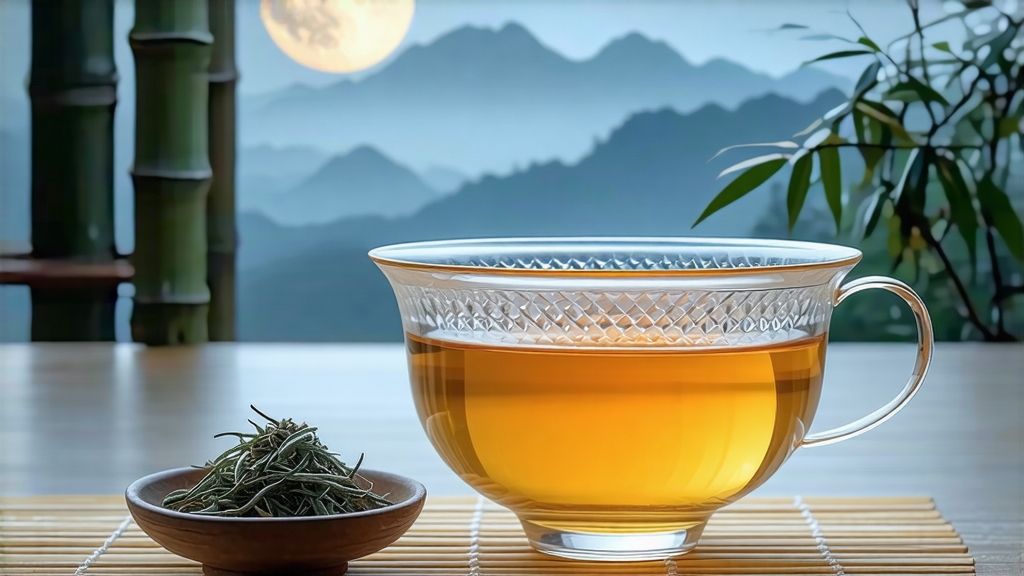
Bai Hao Yin Zhen—literally “White Hair Silver Needle”—is the most aristocratic expression of China’s least-altered tea family. While all white teas are celebrated for their minimalist processing, Silver Needle elevates restraint to an art form: only the unopened bud, sheathed in downy white hairs, is plucked, then allowed to dry slowly until it resembles a pale ivory sliver of moonlight. To international drinkers accustomed to the smoky drama of Lapsang Souchong or the tannic bite of Assam, Yin Zhen can feel almost too subtle—until the third infusion, when the cup finally confesses why Chinese emperors once monopolized it as tribute tea.
History: From Imperial Tribute to Global Muse
The first written record appears in the 1796 edition of the Fuding County Gazetteer, noting that “tea buds, white as frost, are sent to the capital as spring tribute.” At that time the leaves were sun-dried on paper screens inside the ancestral halls of the Tong family; imperial couriers rode nonstop to Beijing so the Daoguang Emperor could taste the “first spring breath.” Export began in the 1890s when European merchants in Fuzhou recognized the visual drama of the down-covered needles and rebranded them “Silver Tips” for London salons. Paradoxically, the tea survived the fall of the Qing, the warlord era, and the Cultural Revolution precisely because its production remained so small-scale: a single village could supply the world, and the world hardly noticed when politics closed the mountains for a decade. Only after 2005, when the Chinese government granted White Tea a Protected Geographic Indication, did global demand explode; today Fuding’s 17,000 mu of certified gardens cannot satisfy the boutique market, and well-aged cakes of 2012 Yin Zhen fetch four-figure dollar prices at Hong Kong auctions.
Terroir & Cultivar: Why Fuding Tastes Like Marine Mist
Silver Needle is inseparable from Fuding’s littoral climate. The Taimu mountain range traps humid air from the East China Sea, creating morning fogs that filter UV light and slow photosynthesis. The local heirloom cultivar, Fuding Da Bai (“Big White”), has evolved jumbo buds—often 2.5–3 cm long—that store extra L-theanine and glucose, giving the tea its signature sweet-broth texture. Attempts to transplant Da Bai to Yunnan or Sri Lanka produce longer, greener needles that never develop the creamy, marine-mineral finish locals call “kelp milk.” Within Fuding itself micro-zones matter: buds from Guan Yang village carry higher geraniol, yielding lily-like top notes, while those from Tai Mu’s north slope pick up a cool menthol echo because the mist lingers until noon.
Plucking Calendar: One Dawn, One Standard
Authentic Yin Zhen is harvested only between Qingming (early April) and Grain Rain (late April), on days when the dawn temperature stays below 17 °C. Pickers—usually women in wide straw hats—snap the bud with the nail of the middle finger to avoid bruising. The imperial standard, still enforced by the Fuding Tea Association, demands “one bud, no leaf, no nail mark, no purple tip.” A skilled plucker gathers barely 500 g of fresh buds per hour; it takes 30,000 buds, or eight hours of stooped labor, to produce 500 g of finished tea.
Craft: The Art of Letting Go
Once baskets arrive at the cottage factory, the buds are spread one layer deep on bamboo trays perforated with 2 mm holes that encourage vertical airflow. For the next 36–48 hours they undergo a dual withering: gentle sun for the first morning (26 °C, 65 % RH), then retreat to an indoor loft where mountain breezes continue the dehydration. No rolling, no pan-firing, no kneading—only the whisper of oxidation that occurs as cellular walls break down and polyphenols meet ambient enzymes. Masters gauge readiness by the “three bends” test: a bud lifted by tweezers should droop like a question mark, the tip touching the tray while the base remains rigid. At this point the moisture has fallen to 8–10 %, and the bud’s color shifts from jade green to pewter silver. A final 20-minute charcoal bake at 40 °C—using embers of local longan wood—sets the fragrance without adding smoke